It has been a while since I blabbered about the cotyledons of Claytonia, but I want to let you all in on something I find VERY interesting…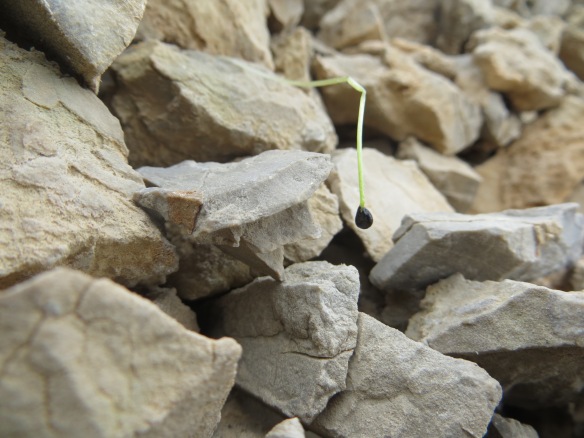 … so maybe we should start with a survey, to see what you think. How many cotyledons do you think Claytonia have? Keep in mind, they are dicots.
… so maybe we should start with a survey, to see what you think. How many cotyledons do you think Claytonia have? Keep in mind, they are dicots.

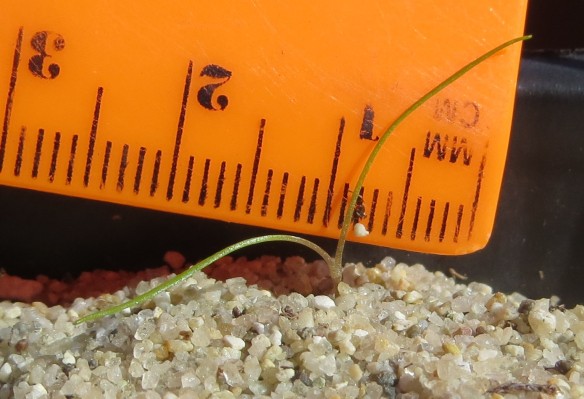 If you guessed that Claytonia have 2 cotyledons, you’re right… but you’re not the only one that is right. Technically, those of you that guessed Claytonia have only 1 cotyledon are also correct — that’s right, there is in fact a group of dicots with only 1 cotyledon (probably several, but that question exceeds the scope of this blog post). Claytonia Section Claytonia, otherwise known as the tuberous perennials, lack a second cotyledon present in other species of Claytonia (and all of their closest relatives). To me, this is just another reason why you should believe that Claytonia is the whackiest group of plants this side of the Mississippi River. 😉
If you guessed that Claytonia have 2 cotyledons, you’re right… but you’re not the only one that is right. Technically, those of you that guessed Claytonia have only 1 cotyledon are also correct — that’s right, there is in fact a group of dicots with only 1 cotyledon (probably several, but that question exceeds the scope of this blog post). Claytonia Section Claytonia, otherwise known as the tuberous perennials, lack a second cotyledon present in other species of Claytonia (and all of their closest relatives). To me, this is just another reason why you should believe that Claytonia is the whackiest group of plants this side of the Mississippi River. 😉
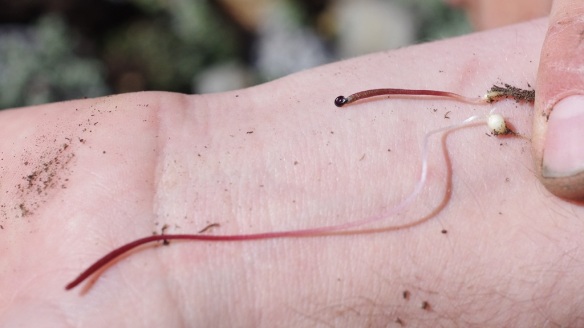 So who cares, there has been a loss of one of the cotyledons in this group of plants. One time only evolution, and now these plants simply can’t recover that lost cotyledon — I’m over it… right? WRONG! There is something fishy going on here, and it has to do with a certain caudicose perennial I have mentioned before: Claytonia megarhiza (pictured below).
So who cares, there has been a loss of one of the cotyledons in this group of plants. One time only evolution, and now these plants simply can’t recover that lost cotyledon — I’m over it… right? WRONG! There is something fishy going on here, and it has to do with a certain caudicose perennial I have mentioned before: Claytonia megarhiza (pictured below).
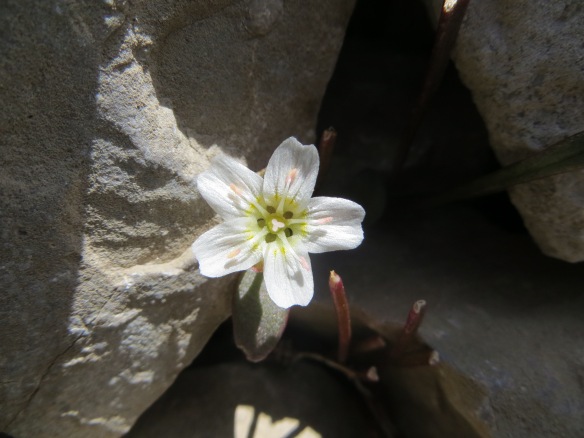
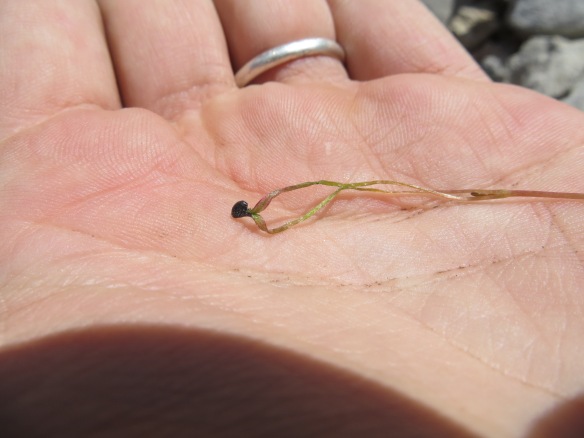 You can see from the second image (the photo immediately above) that Claytonia megarhiza clearly has two cotyledons, not one like the tuberous, perennial Claytonia species I mentioned before. Thus, you’d expect that this species is more closely related to those other Claytonia that have two cotyledons, right? Well…
You can see from the second image (the photo immediately above) that Claytonia megarhiza clearly has two cotyledons, not one like the tuberous, perennial Claytonia species I mentioned before. Thus, you’d expect that this species is more closely related to those other Claytonia that have two cotyledons, right? Well…
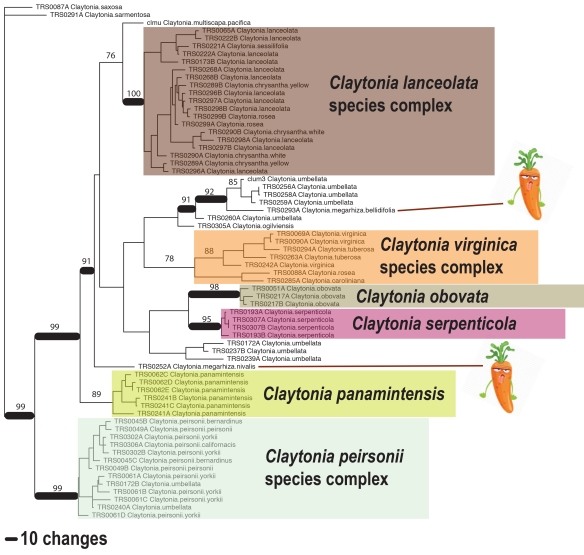 Above is a preliminary phylogenetic tree that I presented at the Botanical Society of America Meeting this year in Edmonton, Alberta, Canada. This tree has been developed from ~500 single nucleotide polymorphisms isolated from the nuclear genome of all of the samples included (using ddRADseq). You can see from the tree that the caudicose perennial C. megarhiza (indicated by [morphologically similar, but anatomically quite different] cartoon carrots ) clearly has a close association with the tuberous, perennial Claytonia, albeit the exact area in the tree where they will stabilize is still yet to be determined. Without question, Claytonia megarhiza is nested somewhere in this clade of otherwise tuberous, perennial Claytonia.
Above is a preliminary phylogenetic tree that I presented at the Botanical Society of America Meeting this year in Edmonton, Alberta, Canada. This tree has been developed from ~500 single nucleotide polymorphisms isolated from the nuclear genome of all of the samples included (using ddRADseq). You can see from the tree that the caudicose perennial C. megarhiza (indicated by [morphologically similar, but anatomically quite different] cartoon carrots ) clearly has a close association with the tuberous, perennial Claytonia, albeit the exact area in the tree where they will stabilize is still yet to be determined. Without question, Claytonia megarhiza is nested somewhere in this clade of otherwise tuberous, perennial Claytonia.
So how did C. megarhiza find itself with 2 cotyledons while all of its closest relatives (including those diverging away from the lot much earlier in evolutionary history) have only 1? If you have the answer… I would love to hear it from ya! From my perspective, it is a question that is ‘to be determined’ but I am hopeful that my dissertation will change things. 😉

What’s up with loss of second cotyledon? Is it used for something else? Or does it simply not exist? Strange.
it is quite weird, I agree. Guessing the two are fused (rather than one being lost), but I haven’t done the anatomy work yet to back up that claim